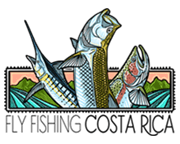Experience Fly Fishing for Giant River Tarpon Like Never Before
Many fascinating species of fish inhabit the world’s tropical freshwaters, and Costa Rica is no exception. For a fly fisherman seeking diverse new species or angling situations nothing is more exciting than floating down a new piece of water surrounded in unfamiliar vegetation and scenery, serenaded by eerie sounds drifting out of the forest, and casting unusual flies to fish one has never seen before. Caribbean Costa Rica is a land of lost waters and unique fly angling opportunities, and we are excited to offer you the chance to have an encounter with the exotic.

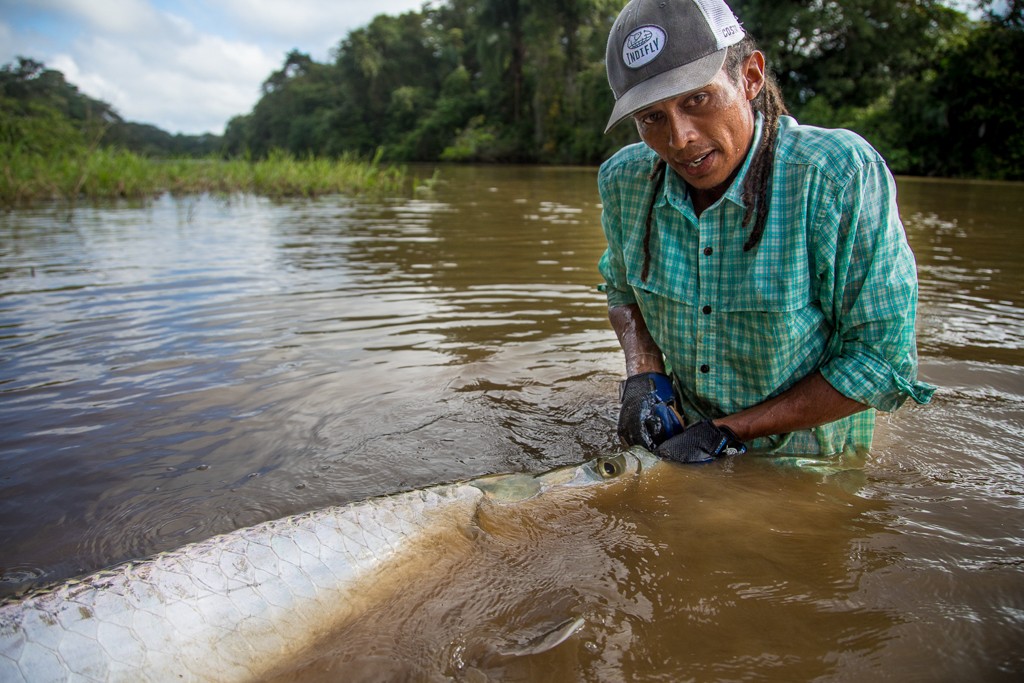

While large adult tarpon can be caught in many places around the world, the fish inhabiting the inland rivers of this northern region are quite extraordinary. Growing to epic proportions, it’s not unusual to see schools of hunting fish well into the triple digits. This is without a doubt one of the world’s finest fly-fishing trophy tarpon destinations, and one that has managed to stay just below the radar resulting in large and aggressive tarpon who aren´t afraid to charge and inhale a fly.

The Jungle Tarpon Reserve is a vast system of freshwater rivers, creeks, and flooded lagoons surrounded by verdant rainforest and swampland. The tarpon have journeyed many miles inland to reach the lagoons. At the time of the their arrival, seasonal rains flood the immense lagoons to create an inland sea surrounded by volcanoes and rife with other primeval creatures like tropical garfish, sawfish, and freshwater bull sharks. This collection of archaic predators explosively feed on the many species of baitfish flushed into the lagoons by the heavy annual deluge, much to the delight of adventurous anglers. From their time in the tannin-stained freshwater the tarpon have lost their silvery hue and are very dark in color. Battling these beasts confined by the river’s lush banks is at once an explosive and awe inspiring experience. If you need a breather from throwing large streamers on your 12-weight outfit, the surrounding forest brims with monkeys, wading birds, spectacled caiman, and other interesting rainforest creatures.
FISHING
What to Expect
Anglers can expect to fish from simple but efficient river pangas, with 2 anglers per boat taking turns on the bow or both casting in certain situations. Since the environment is quite dynamic, fishing is also varied, ranging from sight casting at tarpon hunting or waking in shallow lagoons and creeks, waiting for tarpon to roll or break bait on the surface before presenting a fly, and blind casting in likely areas. There are even times when tarpon congregate at the mouth of one of the jungle’s many creeks and line up in feeding lanes like giant trout in an explosive feeding display one has to see to truly believe. As in most tarpon fishing worldwide, knowledge of distance casting and accurate presentation is a major asset, but due to the intimate jungle environment anglers can often get much closer to their quarry than in other global tarpon fisheries, making this a unique place to hone one’s skills. Overall, anglers can expect shots throughout the week at fish ranging from 20 to the magical 200 pound mark. And since the tarpon here are active feeding fish with little exposure to fishing pressure, flies are often grabbed without second thought.

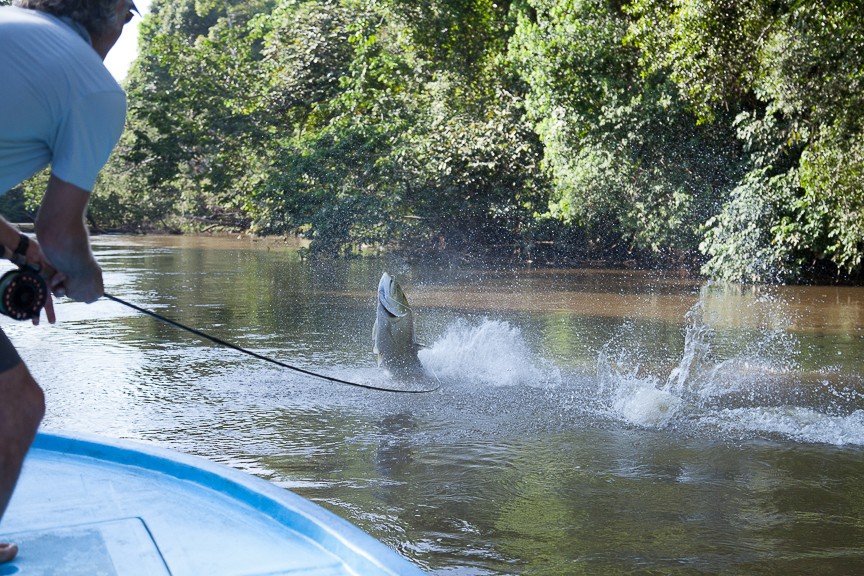
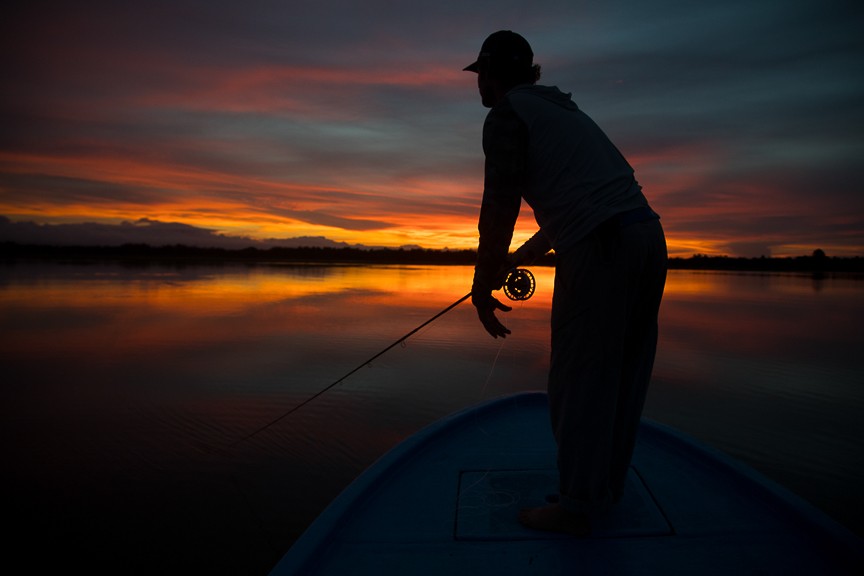
Due to the nature of the jungle river, conditions change drastically each week. Anglers are encouraged to practice both distance and accuracy casting before they come. Some sites also require close range loading and delicate presentations with large 11 and 12 weight outfits, so working on side-arm and slot casting can also greatly help prepare anglers for whatever mother nature decides to throw their way. While some weeks are extremely productive, this can also be a very moody and challenging fishery at times, so being ready from the start will greatly improve the likelihood of capitalizing on opportunities as they come.
SEASON

LODGING & FOOD
Luxury in the Jungle
Even though this is a fishery in the midst of a lush jungle, the lodging is truly world-class. Starting in 2020, anglers stay in a private luxury house located right on the river, complete with 4 private bedrooms & 3 full baths set across 2 floors, with amenities like AC, WIFI, and even a swimming pool. The spacious house has 2 living room areas with TVs, couches, fly fishing coffee table books, etc. making it a perfect place for fly tying and relaxing between fishing sessions. The private dock, where we start and end our fishing days, is located on the property and is only a 2 minute walk down the floating ramp from your door.
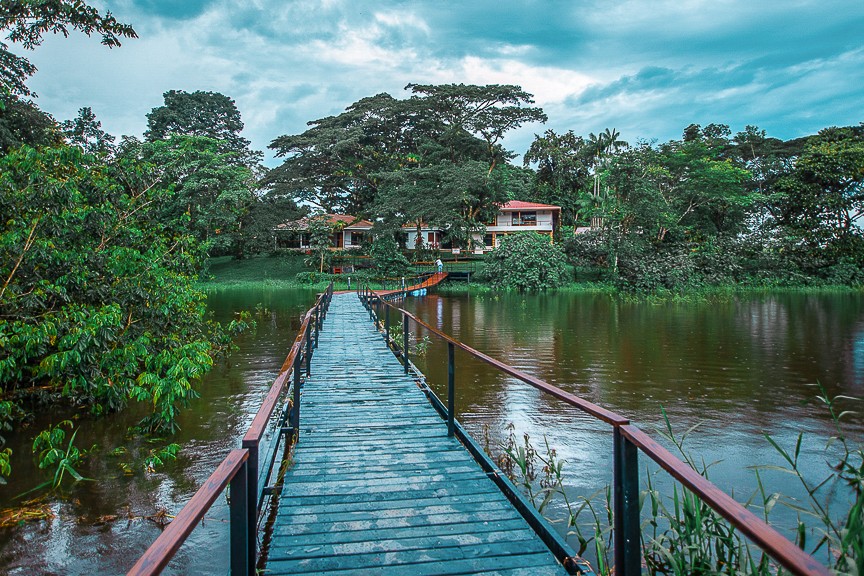
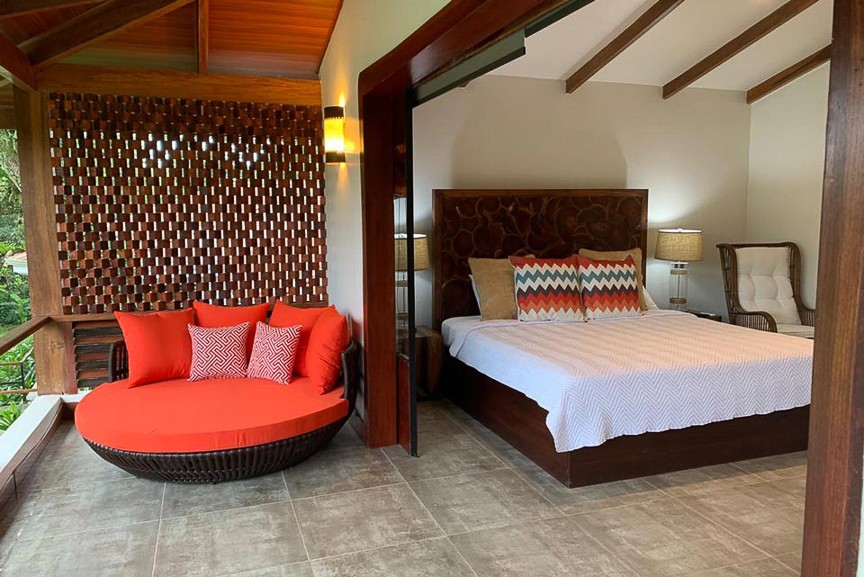
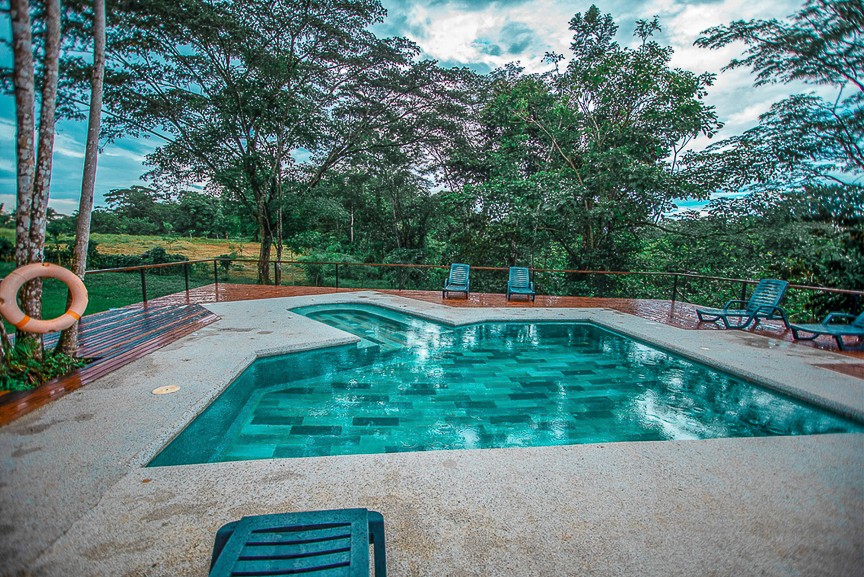
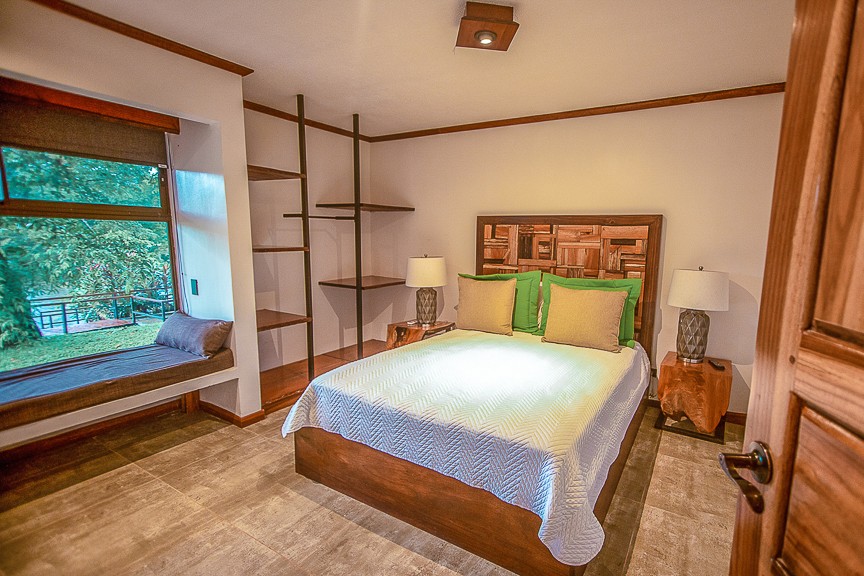
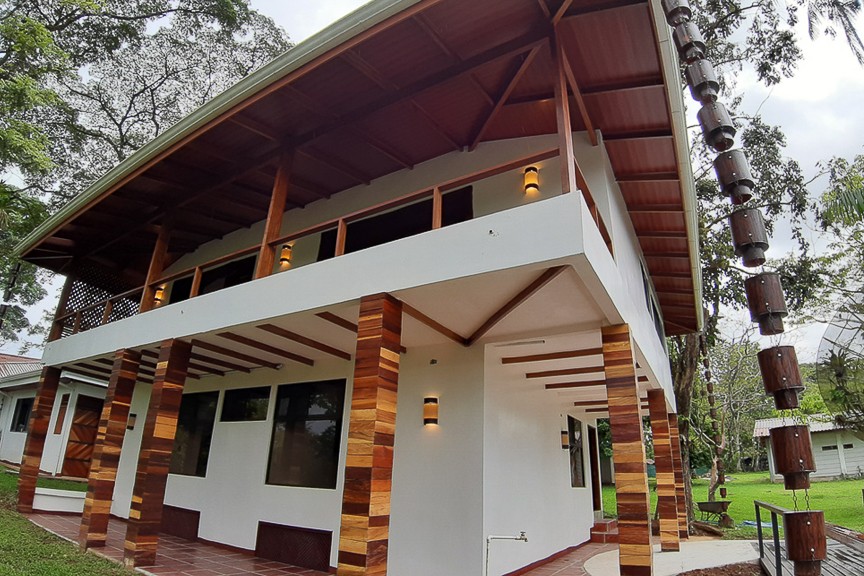

Gourmet with a Local Twist
Food at the Jungle Tarpon Reserve is a combination of on-site gourmet cuisine prepared by several cooks from the local community and relaxed home-cooked meals from several local families and small businesses located nearby. Throughout the week, anglers will have no shortage of interesting local dishes and cold beverages to enjoy after their days stalking tarpon. There has always been a strong focus to involve as many people from the local community as possible in this community-based tourism project, so whether its sourcing local ingredients or visiting a family for a unique traditional meal in their garden, rest assured that the economics of traveling fly fishing benefits as many families as possible.
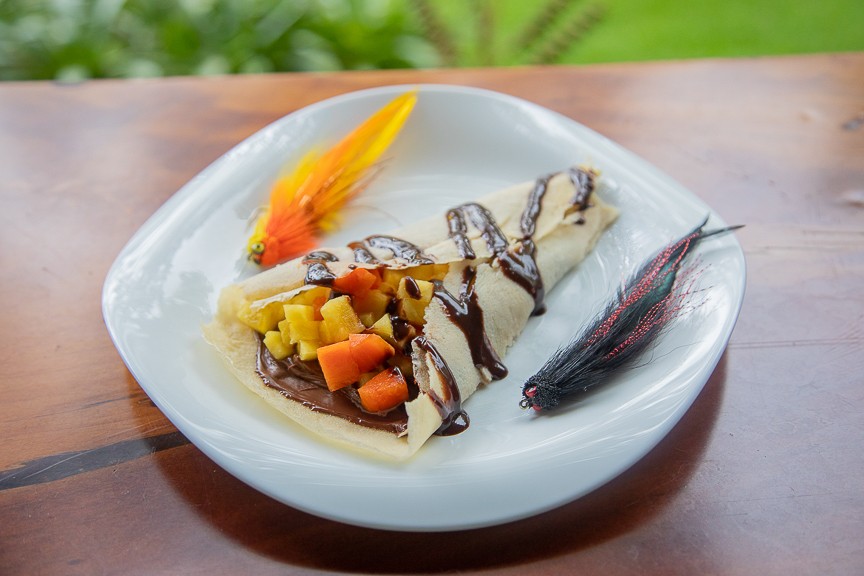
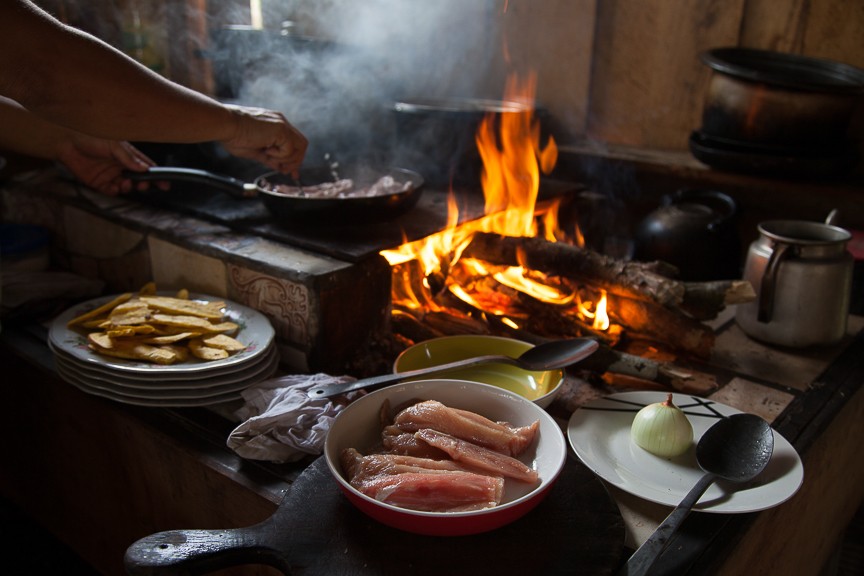
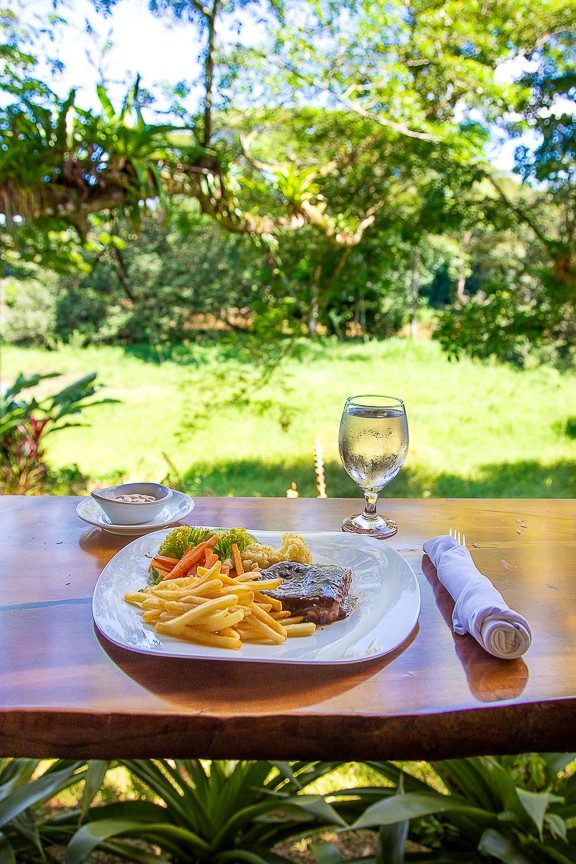
LOCAL SUPPLIES: The local village is little but a ranching settlement in the middle of the jungle, but there is a local supermarket stocking basic supplies such as snacks, drinks, beer and limited spirits, toiletries and other necessities.
TACKLE & GEAR
Tools of the Trade
The tarpon are medium-large (20-200 lbs.) and require 11 or 12 weight rods to tire them quickly before release. Intermediate lines are necessary in most river fishing scenarios, but sink tip lines can be very useful if tarpon are in some of the river’s deeper pools or as the day heats up. Floating lines are a necessity would the lagoons be an option. Having 2 rods with intermediate or sink tip (river) and floating line (lagoons) rigged onboard is preferred so that each fishing scenario can be efficiently handled. Having the 3rd line handy is also highly recommended.
Leaders are pretty standard tapered with shock tippet to 80-100 lbs. We also ask anglers to incorporate a piece of MAXIMUM 40 lb. class tippet into their leader system so that if a tarpon runs through some branches or submerged logs we have the ability to break them off and not damage the fish (in other words, no straight 100 lb. leaders please).
Loaner Program
Don’t have the gear? Don’t fret or make unnecessary and expensive investments. We have established partnerships with some of the finest equipment manufacturers around, and through these partners offer loaner gear to our guests made up of Hardy, Orvis, Thomas & Thomas, Hatch, Cortland and/or RIO. Not only does this allow you to save some cash and still fish with the very best equipment specifically tweaked for our tarpon, it also gives you an opportunity to test out the gear to see if you’d like to make the purchase down the road.

Jungle Tarpon Flies
In terms of flies, the tarpon feed mostly on various types of minnows and other small-medium baitfish, so 2.5-5 inch deceivers and variants of deceivers are highly recommended. The river is stained a reddish orange from tannins in the water, so colors that produce match this coloration (orange, red, yellow) or stand out against it (black, white), preferably in combination (orange/black/white, red/yellow, red/white, yellow/chartreuse, etc). Black and black/purple flies are also HIGHLY effective in both the river and lagoons. Weighted flies are recommended to break the water surface quickly, and spun deer hair heads helps flies push the maximum amount of water and vibrations to get tarpon excited. For specific examples of patterns that work please contact us. NOTE: Custom hand-tied collections available for sale on-site.

OTHER ESSENTIAL ITEMS TO PACK
Other key items to pack include a good breathable rain jacket as we’ll most likely encounter rain, as well as light fast drying long-sleeved clothing to protect from the insects and sun. Both can be harsh at certain times of day, but with proper preparation will not effect your fishing or general comfort. Due to it’s remoteness there is very little to do at night in the area, so think casual and comfortable when packing clothes. Footwear onboard is whatever you are most comfortable with – we prefer bare feet so that fly lines wrapping around toes can be easily felt and dealt with, but bring whatever suites your needs best. We also highly recommend bug repellent with DEET, sun block, hats, sunglasses, cameras, headlights, pliers, and maybe a dry bag or box to keep everything safe onboard – especially for the electronics. The electrical current used in Costa Rica is 110 volts, AC. The sockets are North American-style, but many places often don’t have a place for a grounding prong, so bring an adapter need be.
CONSERVATION

We truly care about our tarpon, and in order to keep this destination sustainable both environmentally and culturally we are constantly looking for ways to make a positive impact in the region. We operate a small non-profit called Conservación Bosque del Sábalo. The goal of this project is to create an internationally recognized tarpon sanctuary together with the surrounding rural communities in order to conserve a globally unique freshwater tarpon habitat in the Caribbean watersheds of Costa Rica by implementing environmental stewardship, community awareness and education, enhanced scientific understanding, and the creation of sustainable economic opportunities. The project uses the vast wetland system of the Jungle Tarpon Reserve as a project nucleus and will eventually scale up efforts to other parts of this unique tarpon habitat/migration route.
CLIMATE
Welcome to the jungle, and Jungle Tarpon Reserve is certainly that. A vast system of rivers, creeks, lagoons, and lowland tropical rainforest, and this is one of the hottest and most humid regions in Costa Rica. The tarpon migrate into these immense landlocked flooded lagoons during the region’s “wet season”, and although most mornings start sunny and beautiful passing storm fronts and torrential downpour can come at any time, especially later in the day. While these periods of wet weather can be uncomfortable, they are usually brief and often times refreshing. We always have large umbrellas onboard, and the rains are a nice break from casting and an opportunity to have a drink or coffee. Mosquitos can also be prevalent at last light, especially when fishing some of the tighter forested sections, so preparation is key. To be ready for the jungle, anglers are advised to bring protection from sun, rain, and blood seeking insects (DEET)

Rough Itinerary Breakdown
- DAY 1 Saturday – Arrival Costa Rica (SJO), Lodging San Jose Hotel or B&B
- DAY 2 Sunday – Depart San Jose, private transport to Jungle Tarpon Reserve, 1/2 day tarpon, Lodging at Riverside Camp
- DAYS 3-7 Monday-Friday – Fish full day tarpon, Lodging at Riverside Camp
- DAY 8 Saturday – Fish 1/2 day tarpon, private transport to San Jose, Lodging San Jose Hotel or B&B
- DAY 9 Sunday – Depart Costa Rica
Included – All lodging at Jungle Tarpon Reserve, all food except first/last nights dinners in San Jose and lunches on transport days, private transportation to/from Jungle Tarpon Reserve and all local transportation at Jungle Tarpon Reserve, guiding, boats, fishing license
Not included – Tackle (rental equipment available from Thomas & Thomas Fly Rods, Hatch fly reels, and Airflo & RIO lines), flies (custom hand-tied collections available for sale on-site), leaders (available for sale on-site), phone calls, off mealtime food (although we have plenty of snacks and coffee available at all times), beer and alcohol, additional tours/transport, gratuities, travel insurance, international flights





















